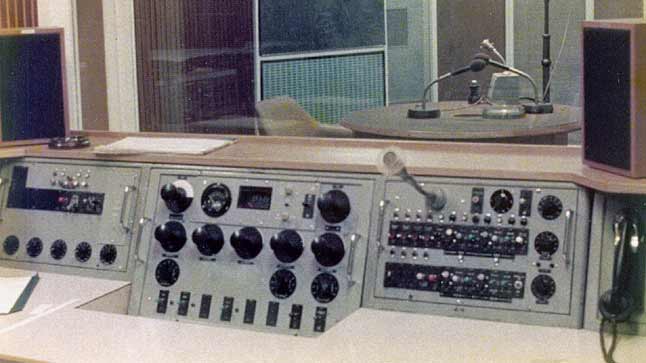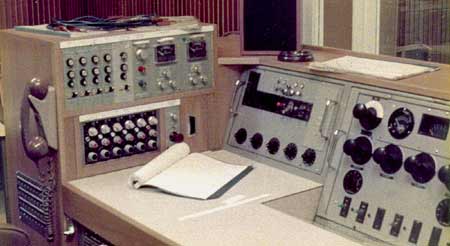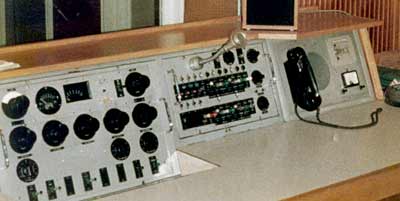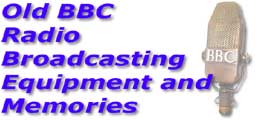By the mid-1960s the Type A was about twenty years old, but
it still had one more trick up its sleeve - stereo. At this time Third and
its daytime offspring, The Music Programme, included programmes of gramophone
records with the continuity announcer providing the links. These discs were
played by studio managers, often in Studio B4. Music scores were supplied
to enable the SM to control levels.
With the start of stereo transmissions some modifications were made to Egton
3's desk to allow it to take over the B4 role, but with the ability to play
stereo discs. This work was probably quite limited, with grams modified, a
stereo channel on the desk and stereo main fader and output amps. The existing
faders were used. Type A faders were balanced bridged-T types, and had three
'tracks' (actually they consisted of a wiper running over studs with resistors
wired between them). Two of the tracks were used to make an unbalanced stereo
fader. No stereo metering was provided, the existing PPM could be switched
between the A or B legs or to A+B - the mono sum of the left and
right channels.
Further work was carried out in 1977/8 to produce the result shown in these
pictures.
This time the original faders were replaced with the type used as group faders
on Type B desks, which could handle the two channels without modification.
The photos suggest that three channels were stereo, with balance controls
(below the faders) giving about 5db swing left or right. These were used to
balance recordings which appeared to have an offset. The remaining channels
were mono and lacked pan pots, their outputs appearing to the centre of the
stereo image.
As an aside to the desk, the RP2/1 grams were modified with Ortofon stereo
cartridges feeding Quad amps to give a stereo output. The quality was better
than the old Tannoys, but they gave an even greater thud on output (hopefully
the gram fader was skilfully closed until the mod started) than mono RP2/1s
when the platter was raised!
A new wing panel was constructed to the left of the desk. The top row contains
four mono RSAs (Response Selection Amplifiers, i.e. EQ) and a stereo RSA.
The next module may have been part of the limiter system and then come the
two mono limiters (of the type used in Type D equipment). Below are six mic
amps, supplied by Calrec and a final mystery module!
For the 1970s rebuild a stereo PPM was provided, as well as the original mono
one. The white-faced meter to the extreme right of the desk was part of the
echo-plate installation. It indicated the reverberation time setting, which
was set by the buttons either side of the meter.




